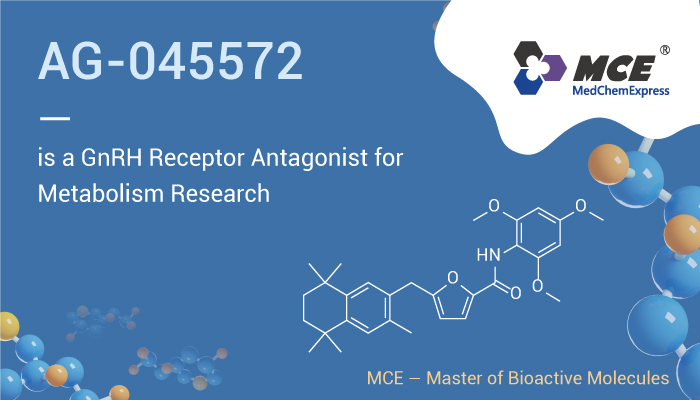The GnRH receptor (Gonadotropin-releasing hormone receptor, GNRHR) is a member of the rhodopsin-like G protein-coupled receptor (GPCR) family. It is the receptor of gonadotropin-releasing hormone (GnRH). In addition, GnRH receptor is located on the plasma membrane of gonadotrophs, pituitary cells that synthesize the gonadotrophins luteinising hormone (LH), follicle stimulating hormone (FSH). Mammalian type I and II GnRH receptors show differential ligand preference for GnRH-I and GnRH-II, respectively.
GnRH receptor activated by GnRH analogues stimulates the synthesis and release of LH and FSH. GnRH receptors can be used for the research of breast and prostate cancer, regulation of fertility, endometriosis and a range of other medical and veterinary uses. This makes the GnRH pathway an attractive target for studying hormone-dependent diseases such as prostate, ovarian, breast cancers, and endometriosis.

AG-045572 is a potent, allosteric and orally active nonpeptidic GnRH receptor antagonist.
Importantly, AG-045572 has the potential for sex hormone-related diseases research. AG-045572 is metabolized by CYP3A in both rats and humans. The Km values are similar in male and female human, female rat liver microsomes, and expressed CYP3A4 and CYP3A5. In addition, the oral bioavailability of AG-045572 in intact male rats is 8%, while in female or castrated male rats it is 24%. Pretreatment of intact male rats with AG-045572 (i.m. for 4 days) resulted in suppression of testosterone to castrate levels. Meanwhile, AG-045572 increases the oral bioavailability in intact male rats from 8% to 27%. Besides, AG-045572 pretreats of intact male rats resulted in a change of its pharmacokinetics, the parameters became similar to those in female and castrated male rats.
To sum up, AG-045572 is a potent GnRH receptor antagonist that effectively suppresses testosterone.
References:
[1] Iatsimirskaia EA, et al. Pharm Res. 2002 Feb;19(2):202-8.
[2] Matthew J Barnes, et al. ChemMedChem. 2011 Nov 4;6(11):2070-80.